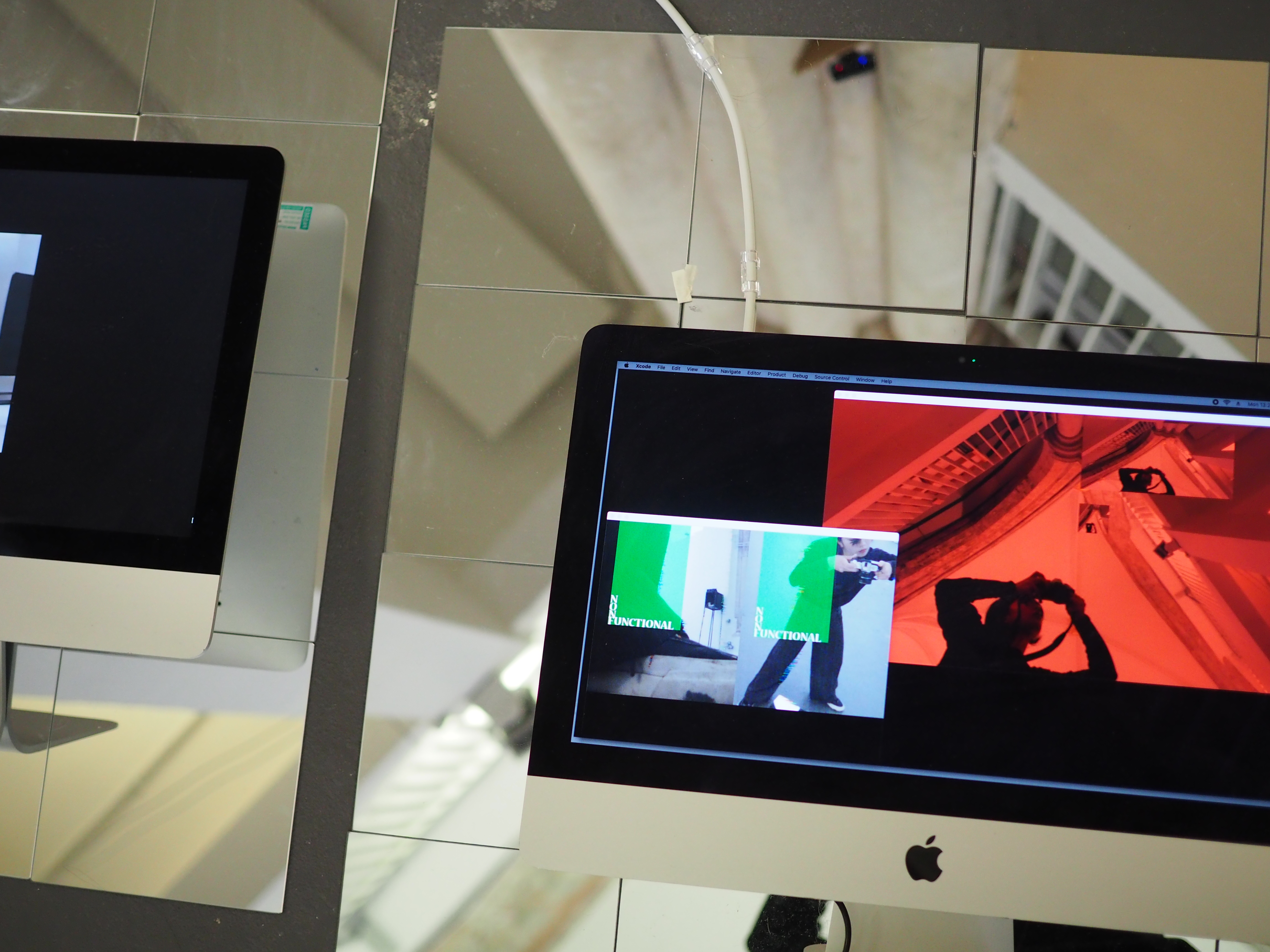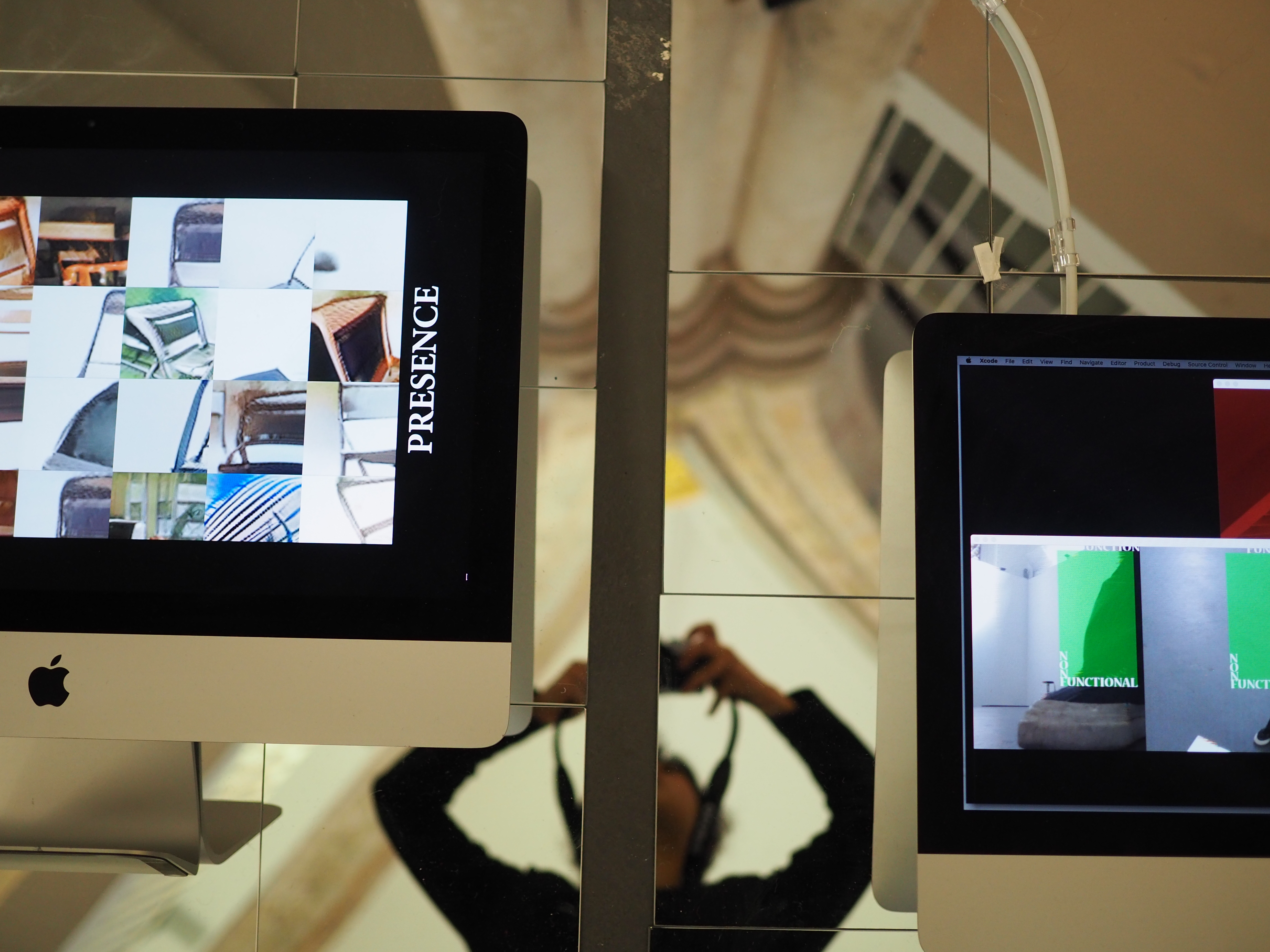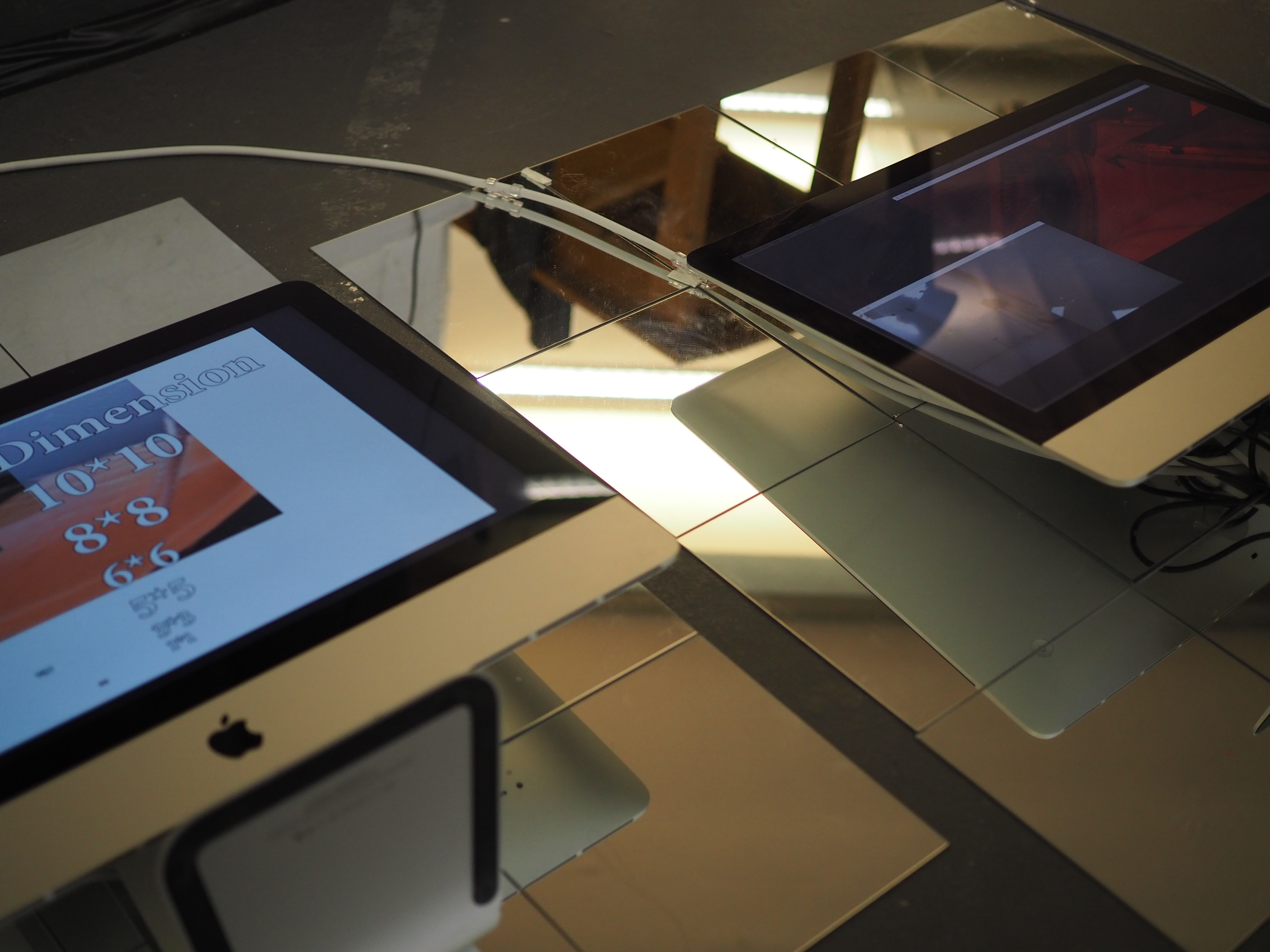Chaotic Objects
A video installation that explores the ways in which we, as humans, situate ourselves in a hyper-consumerist world cluttered with objects.
produced by: Yu Hsuan Liao
Introduction
Good design is invisible. Well-designed objects cater to our needs so seamlessly that we often interact with them mechanically, as if they were extensions of our own bodies. But what happens when we are actively made to reconsider the elements of design? In “The Design of Everyday Things,” Don Norman speaks of “affordances”: the relationship between a physical object and a person that determines how the object could be used. This project makes use of machine learning to generate warped images of everyday objects: chairs, screens, cameras. It invites the audience to consider the ways in which affordances shift according to the varying degrees of distortion of these objects. It also forces us to consider why these objects are designed exactly the way they are. Is their purpose purely functional? What happens when we take functionality out of the equation? Does a chair with too many legs still have value? Can one carry around a camera with jagged edges? Is there purpose for a wavy screen?
Concept and background research
Deeply influenced by the book “The system of object” by Jean Baudrillard, the author discussed the functional, non-functional, metafunctional, dysfunctional and socio-ideological system of objects. Leading readers to rethink about every element that form the object and what does it symbolize in the space and time. In the book, the author mentioned everyday objects proliferate, needs multiply, production speeds up the life-span of such objects - yet we lack the vocabulary to name them all. And he is not including machine in this context. It draws my interest in how machine intereferes the system and how we see and think when the interruption is unavoidable. The questions that surround the idea directed me to the field of object detection and machine learning.
Iohanna Nicenboim, an artist who has amazing works like "objectology" and "objects of Research", also heavily influenced how I do research and what methodology I used to analyse and think. In "objectology", the artist uses morphology to interepret objects by historic, biologic, genetic and perceptual approach. Visualize the from by tweaking details of object as if a genetic modification. She focuses on form, detached from its function, material and technology. Through her work, I started to focus on the functionality of object without distracted by other elements that might dilute the strength of my work.
Installation
The video installation is layering two iMacs directly on pieces of mirrors with three cameras capturing real time images and object detection from three different angles. In this work, mirror plays as a key element that bridge the concept to viewers, which is everyday object reflects human needs and greed. Mirror is the first object that came into my mind that can deliver the message clearly.
Without hiding computers, I use them as elements in my work. Computer has a very short life span because of people’s expectation of evolution. Wider, thinner, more functionality, lighter. People never have a chance to think about the design and reason of creation. By deliberately laying two devices flat on the mirror, people has a chance to interact with the object in different angles, purposes and functions.
The three cameras are set on the ground, on the pillar, and one in-built in iMac respectively. All capturing objects and space from different angles and all the visuals are shown on the first screen together, enabling people to experience observation from different perspective all at once. The other screen is displaying the video with the machine learning trained images and graphics that invoke viewer to think about everyday objects.
Full video link: https://www.youtube.com/watch?v=5fVo9x3wLPo&feature=youtu.be
Technical
Diving into the machine learning world, it’s not only about learning the concept of the process but experimenting how different input of weights in different layers will influence the outcome. Before starting the exploration, the first issue that I encountered is dataset. Machine learning acquire a considerable amount of datas for better performance. Ideally, I planned to collect data by myself, by taking photos of object that I picked as symbols representing different aspects of the system. Yet, I soon gave up this journey of my own collection build up due to the time pressure.
With open source data sets, I started to try different wights and steps to run. Every time hitting start button is like a gamble, I can’t really expect what input will have better performance. And every training is time consuming and GPU draining. There’s no standard formula of machine learning, only through slightly tweak in each training can reach precision.
For object detection, I use yolo with already trained model on github, so the classifications are limited. I deliberately wipe out the classification tags that name what object it is. I aim to let people has thier own definition without influced by the calculation of machine. And without calssification, human being are also recognised as "object", just as other objects that sit in the space. By eliminating hierarchy, people has a chance to reposition theirselves in a wolrd cluttered with objects through this experience.
Future development
Objects function differently in different time and space. By simply moving this work to different spaces such as kitchen, cinema, on the street will create a completely different experience and outcome.
Dimension is also an element can play with. I originally imagine this piece to be scattered through a whole room that will give a more complete experience of the reflection. But due to covid-19, the social distancing limits the space of each piece to 2m*2m. With a bigger space, more cameras that capture details and reflection, the work can deliver the message more powerfully.
The last challenge will be replacing the iMac, instead of two screen, I’ll be projecting visuals in 3D that illustrates the shape of object more completely. In machine learning, those images are formed by numbers and digit that you can’t imagine what they will be by simply reading the numbers. With projecting 3D visuals, I can use those digits and numbers to form a object directly in the space. The transformation and fluidity between construction, deconstruction, functional and non functional will be a main future development I would want to work on.
Self evaluation
In theory part, I’m satisfied what I’ve grown and explore during the lockdown. I started to observe and appreciate different objects in a whole new perspective. Objects can be time capsule that document moments in history. Understanding the texture, form, hierarchy of it enable me to identify how I positioned myself in different time and space.
Yet, there are several aspects I would love to improve on my work. First, the machine learning trained models are limited because of the outdated open datasets. With more time and past experience, I will collect my own data set to train the model. Secondly, the interaction between the work and the visitors can be more diverse. Instead simply capturing the real images of space and visitors, the machine can acts differently based on the objects of visitors. At last, the set design can be improved by the layout of elements. The potential of mirror is endless, it not only reflect but also extends the space. What does it mean when there is an extension? Does the functionality change when the status of the space change?
Overall, there are many points I can improve from this work. Especially technical part, with previous knowledge of machine learning, I’m able to predict how numbers affect layers to perform more accurately.
References
1. "The system of objects" Jean Baudrillard 1968
2. "The Design of Everyday Things" Donald Norman 1988
3. "Objectology" Iohanna nicenboim 2011
4. "Objects of Research" Iohanna nicenboim 2015
Image Dataset Resource
1. https://ai.googleblog.com/2016/09/introducing-open-images-dataset.html
2. http://image-net.org/index
3. https://www.cs.columbia.edu/CAVE/software/softlib/coil-20.php
4. http://hemanthdv.org/OfficeHome-Dataset/
Code References
1. https://github.com/TetsuakiBaba/ofxOpenCvDnnObjectDetection
2. https://github.com/opencv/opencv/blob/master/samples/dnn/README.md
3. https://qiita.com/buchayaty/items/4020100f531c07418f38
4. https://github.com/NVIDIA/DeepLearningExamples




































































